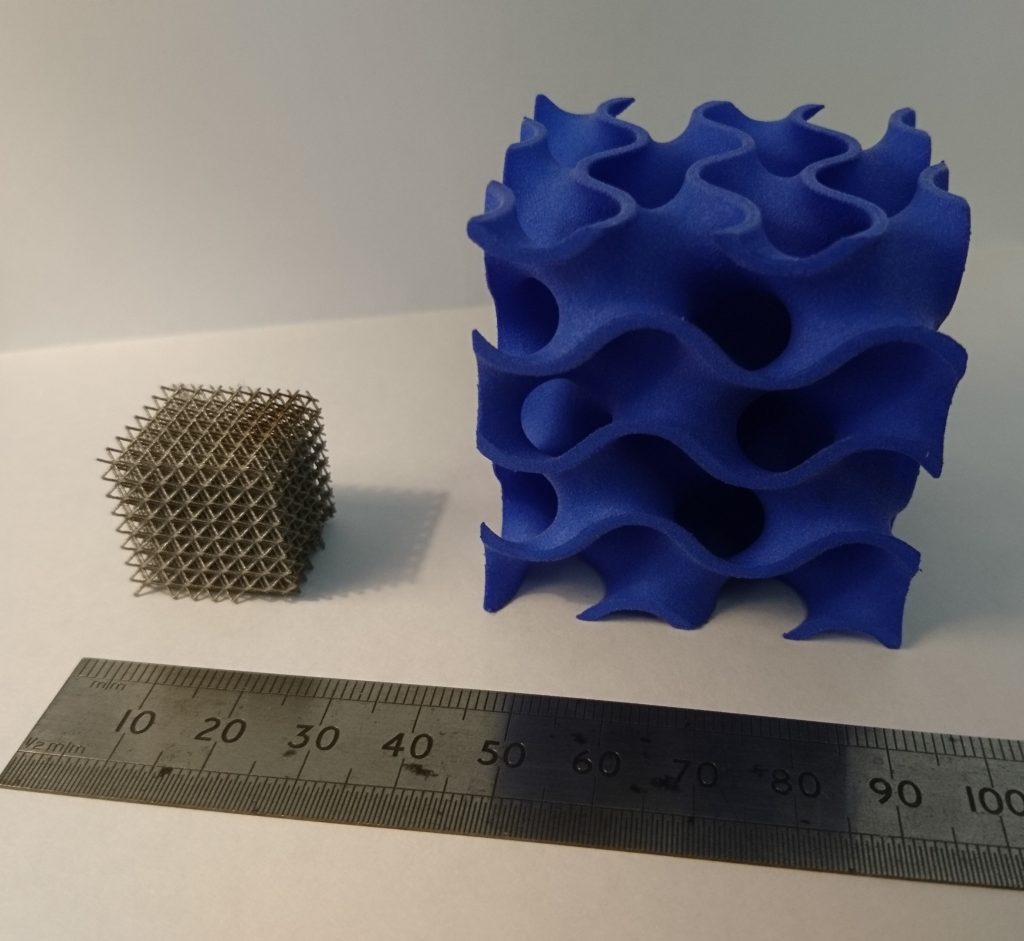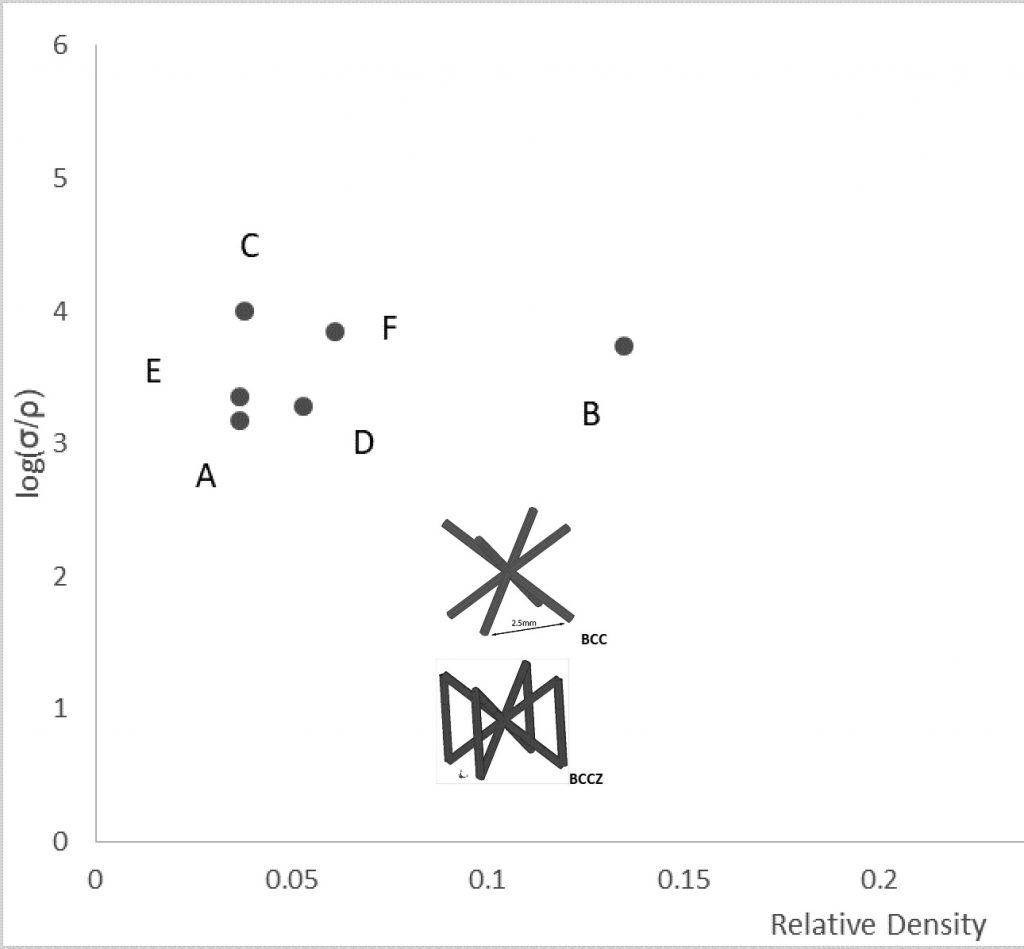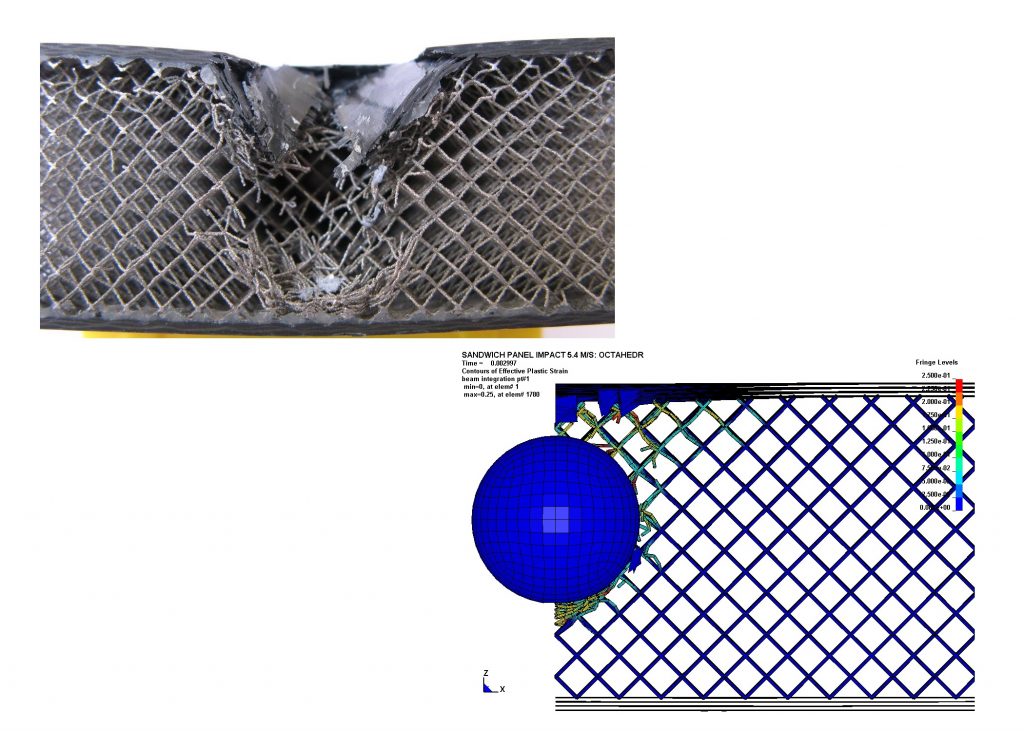The Book “Metallic Microlattice Structures: Manufacture, Materials, and Application” by Robert Mines Available
Robert Mines has written twenty papers on 3D printed microlattice structures and has been doing research into 3D printed microlattice structures for over 15 years. He has now bundled his knowledge into a book, “Metallic Microlattice Structures: Manufacture, Materials, and Application.”

“On left: BCC Stainless Steel Microlattice realised using SLM, On right: Triply Periodic Minimal Surface realised in nylon using Fusion Deposition Modelling (TPMS provided by Shapeways/Thomas Meikle).”
A microlattice is a very interesting structure that could fulfill a very wide range of roles in engineering applications. We’ve covered them before when Lawrence Livermore made exciting new high strength structures and when we covered this shape memory microlattice paper as well as this nanoscale microlattice paper. In aerospace especially different microlattice structures could be used to save weight while offering the same support as a solid part. In new areas such as the commercial space race, microlattice structures could give designers new ways of overcoming fundamental design challenges. Some automotive companies are now experimenting with using microlattice structures on the chassis and other parts of the car. On the surfaces of orthopedic and other implants, biolattice structures can also improve the functionality of the implant overall.
Robert tells us that, “ They can be realised at various scales: from millimeter scale to micrometer scale to nanometer scale. They can incorporate multi functionality, for example micro heat exchangers.”
A lightweight part that could do double duty such as this would be very valuable where weight saving is important especially since reduced part count could save in costs as well.
Robert says that, “There are a large number of additive manufacturing processes, a large number of materials, a large number of topologies, a variety of scales, and the technology is fast changing. How can an engineer (a) effectively understand relevant technologies and (b) effectively apply relevant technologies?”
He wrote his book to solve this challenge for his audience. In the book he looks at microlattice structures made through EBM, binder jetting and DMLS (SLM) specifically looking deeper into stainless steels, titanium and aluminum. His book looks at “limited lattice topologies, namely Body Centred Cubic/octahedral, BCC with Z strut and octet truss” as well as structural elements “namely beams, panels, and energy absorbers” and looks at their “behaviours, namely beam bending, foreign object impact of panels, and energy absorbers.”

“Exploring the design space: Specific compression strength versus relative density for: A:
BCC Stainless Steel Cell size 2.5mm, and departures from A – B: 1.25mm cell size, C: BCCZ, D:
Electroless plated, E: Impact loading and F: Titanium Alloy.”
Robert made his book for engineers to have a “coherent overall conceptual framework for the integrated use of manufacture, materials and application for 3D printed microlattice structures” which can “address future additive manufacturing technologies and opportunities” while focusing on, “on physical insights and complement increasingly sophisticated computer based tools and frameworks.”
A truss as a structure is familiar to us from concert halls and other venues. These lightweight and strong structures could become much more widespread if Robert has his way. What’s very exciting about microlattices is that they can be made on a “millimeter scale to micrometer scale to nano meter scale” which means that their use could be widespread indeed and that you can have a microlattice in your microlattice. Microlattices could also be designed to fail in a specific way for example and could prove to be a very exciting tool for engineers to design 3D printed materials and parts in a completely new way.

“Foreign object impact of a sandwich panel by a sphere, with BCC stainless steel core and
CFRP skins: experiment and numerical”
Why are lattices important?
They are a class of cellular material, used in structures that have to be lightweight, for fuel effectiveness and added payload. They can be multifunctional. The best example is the micro heat exchanger, where cell geometry, and material can be optimized for heat transfer.
What applications are there for lattices?
Core materials sandwich structures. Any structural element that bends or is subject to local loads.
Why EBM and SLM?
EBM, SLM are good for making microlattice structures, and the process has been improved and optimized for a number of years.
Where do you expect them to be used in end-use parts?
They are being integrated into lightweight parts.. currently brackets in aerospace, micro drones, equipment cooling in spacecraft.
What industries could benefit from using them?
Currently high end (aerospace, bio, high-end sports cars).. but the use of binder jetting will bring costs down to the mainstream.
What materials make for the best lattices?
It is restricted for SLM/EBM but wider for binder jetting. Aluminium and titanium alloys are good for lightweight, but more difficult to work with.
How significant do you think that they will be?
Microlattices are part of the wider field of architectured materials and metamaterials. 3D printing provides new opportunities for these.
The idea of designing a particular material that will behave in a particular way in order to optimally solve a specific design challenge for just one part of a plane, for example, is very new. Microlattices are exciting new structures that could very well give us new ways to solve design challenges in wholly new ways. A material is no longer a given but can be created and made for a very specific purpose. Through 3D printing, the creation, testing, and manufacturing of “a material for every voxel” could become a manufactured reality. Robert’s book is, therefore, a very timely introduction for engineers looking deeply at the potential for real change that 3D printing could bring to business. Check it out here.
Subscribe to Our Email Newsletter
Stay up-to-date on all the latest news from the 3D printing industry and receive information and offers from third party vendors.
You May Also Like
Gorilla Sports GE’s First 3D Printed Titanium Cast
How do you help a gorilla with a broken arm? Sounds like the start of a bad joke a zookeeper might tell, but it’s an actual dilemma recently faced by...
Nylon 3D Printed Parts Made More Functional with Coatings & Colors
Parts 3D printed from polyamide (PA, Nylon) 12 using powder bed fusion (PBF) are a mainstay in the additive manufacturing (AM) industry. While post-finishing processes have improved the porosity of...
$25M to Back Sintavia’s Largest Expansion of Metal 3D Printing Capacity Since 2019
Sintavia, the digital manufacturing company specializing in mission-critical parts for strategic sectors, announced a $25 million investment to increase its production capacity, the largest expansion to its operations since 2019....
Velo3D Initiates Public Offering in a Bid to Strengthen Financial Foundations and Drive Future Growth
Velo3D (NYSE: VLD) has been among a number of publicly traded 3D printing firms that have attempted to weather the current macroeconomic climate. After posting a challenging financial report for 2023,...





























